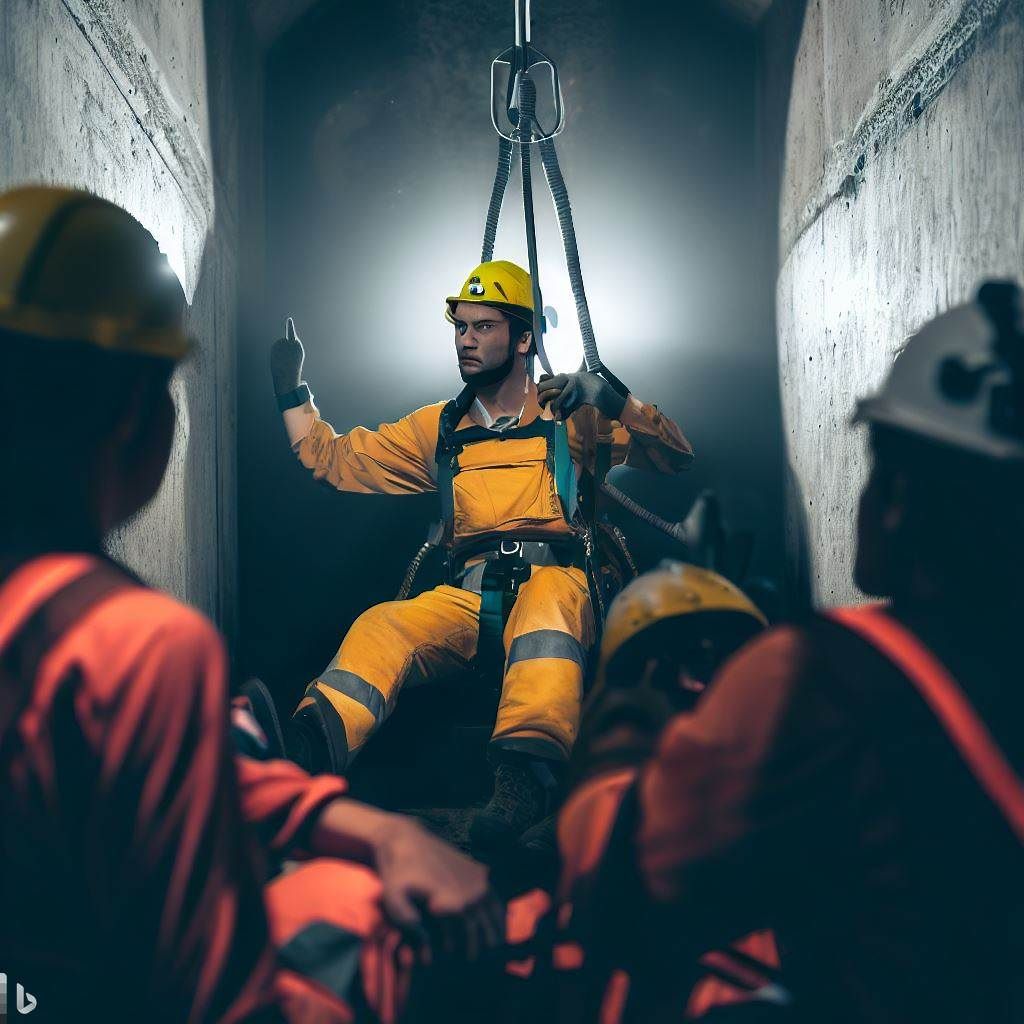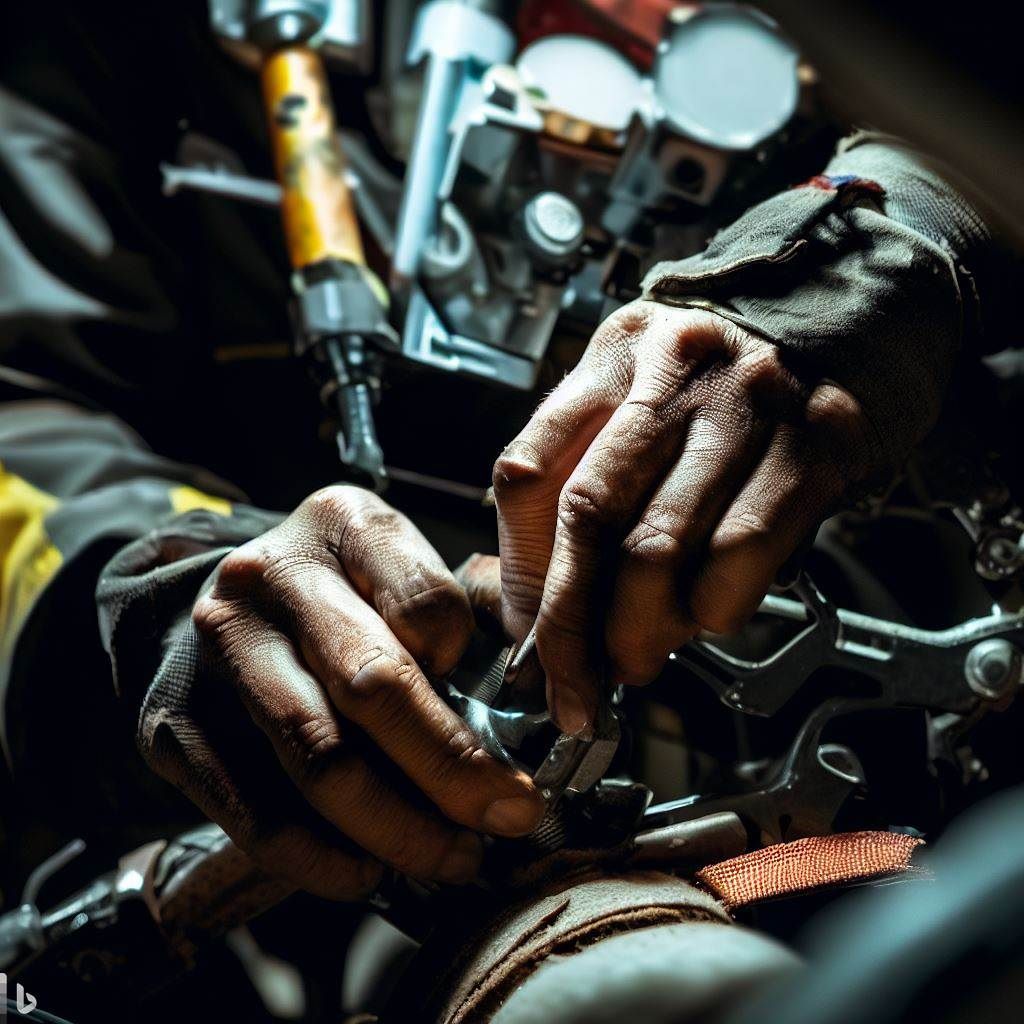Mastering the Essentials: An In-Depth Guide to Confined Space Rescue Technician Training
Confined spaces, such as tunnels, tanks, vessels, silos, storage bins, hoppers, vaults, and pits, are not necessarily designed for people but are large enough for workers to enter and perform certain jobs. They have limited or restricted means for entry or exit and are not designed for continuous occupancy. Rescuing individuals from these spaces requires specialized skills, knowledge, and equipment.
Understanding the principles of confined space rescue is crucial for any aspiring rescue technician. These principles include recognizing the dangers inherent in confined spaces, understanding the physical and chemical properties, and knowing how to use specialized equipment to access and extract victims safely.
Confined space rescue operations can be complex and hazardous. Potential risks include oxygen deficiency, toxic or flammable atmospheres, unstable structures, and the risk of further entrapment. Therefore, confined space rescue technicians must receive comprehensive training to ensure their safety and the safety of those they are tasked to rescue.
Importance of Confined Space Rescue Technician Training
The importance of confined space rescue technician training cannot be overstated. Numerous accidents occur in confined spaces yearly, resulting in injuries and fatalities. Many of these incidents could be prevented with correct training and procedures.
Confined space rescue technician training equips individuals with the knowledge and skills to handle these dangerous situations effectively. It can mean the difference between life and death for the person trapped in the confined space and the rescuers themselves.
In addition to saving lives, confined space rescue technician training also has other benefits. It promotes a safety culture within the workplace, reduces the likelihood of accidents, and helps organizations comply with occupational health and safety regulations.

Key Components of Confined Space Rescue Technician Training
Confined space rescue technician training is typically composed of several key components. Firstly, trainees learn about the various types of confined spaces and their associated hazards. This includes understanding the risks of air quality, physical layout, and the potential for fires or explosions.
The second component is learning about the equipment used in confined space rescues. This ranges from personal protective equipment (PPE) to specialized tools for entry and extraction. Trainees learn how to use and maintain this equipment properly to ensure it functions correctly when needed.
The third component involves learning about the procedures and techniques for carrying out a confined space rescue operation. This includes planning, risk assessment, communication, and teamwork. It also involves learning how to assess and manage the medical needs of victims, both at the scene and during the extraction process.
Requirements for Confined Space Rescue Technician Training
To become a confined space rescue technician, there are several prerequisites. Firstly, candidates must be physically fit and able to work in challenging environments. They must also be comfortable working in confined spaces and heights and have a strong ability to work as part of a team.
Secondly, candidates should have a strong understanding of health and safety regulations related to confined spaces. This includes knowledge of hazardous materials, emergency procedures, and first aid.
Finally, candidates must complete a confined space rescue technician training course involving theoretical and practical components. They must also pass a comprehensive examination to demonstrate their understanding of the principles and techniques of confined space rescue.
The Process of Confined Space Rescue Technician Training
The process of confined space rescue technician training typically includes both classroom-based learning and hands-on practice. The theoretical component covers topics such as the nature and types of confined spaces, understanding and assessing potential hazards, and risk management principles.
The practical component involves real-world scenarios where trainees can apply their knowledge and skills. They learn how to use rescue equipment, conduct risk assessments, develop rescue plans, and conduct rescue operations under controlled conditions. This hands-on training is essential for building confidence and competence in confined space rescue techniques.
Essential Skills for a Confined Space Rescue Technician
There are several essential skills that a confined space rescue technician must master. Firstly, they must be competent in using rescue equipment, including breathing apparatus, harnesses, tripods, winches, and stretchers.
Secondly, they need to have strong problem-solving skills. During a rescue operation, technicians may have to make quick decisions under pressure. They must assess the situation accurately, develop a plan, and implement it effectively.
Thirdly, confined space rescue technicians need to have good communication skills. They must communicate effectively with their team, other emergency services, and the victims they are rescuing. They must also provide clear and accurate information to incident commanders and other decision-makers.
Practical Applications of Confined Space Rescue Technician Training
The skills and knowledge gained from confined space rescue technician training have wide-ranging practical applications. These technicians can work in various industries, including construction, mining, oil and gas, and emergency services.
In addition to actual rescue operations, confined space rescue technicians often play a critical role in planning and prepping for potential emergencies. They can help organizations develop and implement safety policies, carry out risk assessments, and conduct safety drills.
Moreover, the skills and knowledge gained from this training can be invaluable in everyday life. The ability to make quick decisions under pressure, communicate effectively, and work as part of a team are all skills that are highly valued in many areas of life.
Certification and Career Opportunities in Confined Space Rescue
Individuals can earn certification after completing the confined space rescue technician training and passing the comprehensive exam. This certification is often a requirement for jobs in this field and can open up numerous career opportunities.
Confined space rescue technicians can find employment in a variety of sectors. They can work as part of a professional rescue team, become safety officers in industrial settings, or provide training and consultancy services. With additional training and experience, they can also progress to supervisory or management roles.

Where to Get Confined Space Rescue Technician Training
Numerous organizations and training providers offer confined space rescue technician training. These include professional associations, private training companies, community colleges, and emergency services departments.
When choosing a training provider, it is important to ensure that the course is accredited and recognized by relevant industry bodies. It is also advisable to look for hands-on training courses, which are critical to developing practical skills and competence.
Conclusion: The Role of the Confined Space Rescue Technician
In conclusion, confined space rescue technicians play a vital role in ensuring the safety of workers in various industries. Their training equips them with the knowledge and skills to conduct complex rescue operations in challenging environments. Their role is not just about responding to emergencies but also about preventing them. Risk assessments, safety drills, and training help create a safer working environment.
Frequently Asked Questions:
What is a confined space?
A confined space is an area not designed for continuous occupancy and has limited or restricted means for entry or exit. Examples include tunnels, tanks, vessels, silos, storage bins, hoppers, vaults, and pits.
What are the risks associated with confined spaces?
Confined spaces can pose several risks to workers, including oxygen deficiency, toxic or flammable atmospheres, unstable structures, and further entrapment.
Why is confined space rescue technician training important?
Confined space rescue technician training is important because it equips individuals with the knowledge and skills to handle these dangerous situations effectively. It can mean the difference between life and death, not only for the person trapped in the confined space but also for the rescuers themselves.
What are some of the topics covered in confined space rescue technician training?
Confined space rescue technician training covers many topics, including recognizing the dangers inherent in confined spaces, understanding the physical and chemical properties, and using specialized equipment to access and extract victims safely.
What are some of the benefits of confined space rescue technician training?
In addition to saving lives, confined space rescue technician training promotes a safety culture within organizations. It can help prevent accidents from occurring in the first place by ensuring that workers are aware of the risks associated with confined spaces and know how to work safely in these environments.
